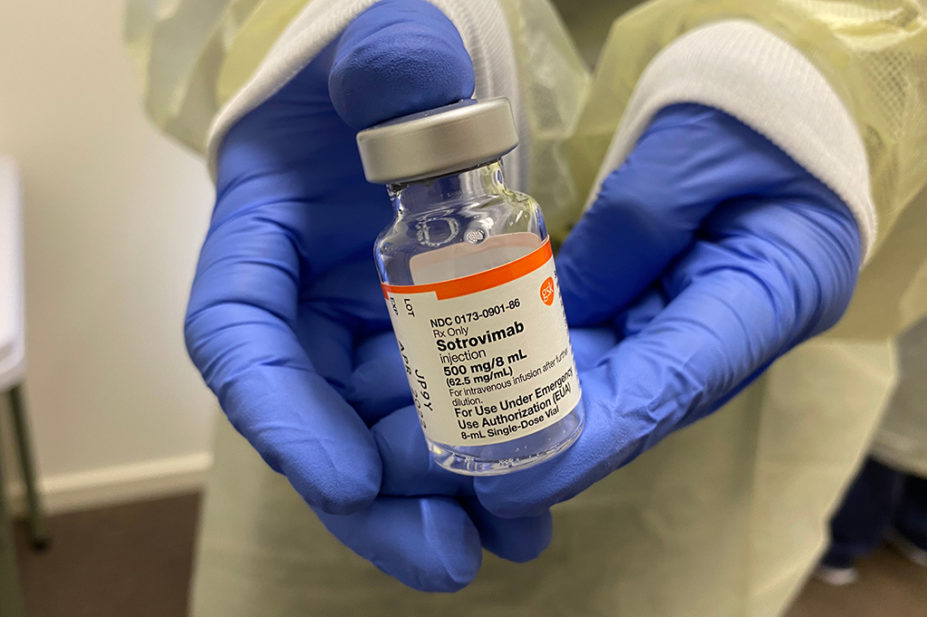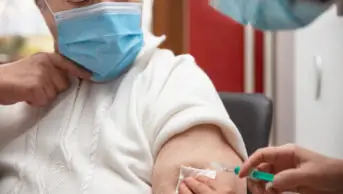
Shutterstock.com
Sotrovimab (Xevudy; GSK and Vir Biotechnology) is no longer recommended as a first-line treatment for non-hospitalised patients with COVID-19, according to updated UK guidance.
The UK-wide policy has been updated, effective immediately, following consideration of the updated COVID-19 therapeutic guideline from the World Health Organization (WHO), a review of the latest available evidence and to reflect changes in marketing authorisations.
Previously, clinicians were advised that eligible patients who are symptomatic and showing no evidence of clinical recovery should be offered either nirmatrelvir + ritonavir (Paxlovid; Pfizer) or sotrovimab as a first-line treatment, with remdesivir (Veklury; Gilead) as a second-line option and molnupiravir (Lagevrio; MSD and Ridgeback Biotherapeutics) as the third-line option.
However, the updated UK-wide guidance, issued on 28 November 2022, advised that only nirmatrelvir + ritonavir should be offered first line and that sotrovimab may be considered “by exception” where the antiviral treatments are contraindicated or determined to be unsuitable following multidisciplinary team assessment.
In September 2022, the WHO made a strong recommendation against the use of sotrovimab in non-hospitalised patients on the basis that it had limited efficacy against the Omicron variant of COVID-19.
Updated guidance has also been issued on the use of baricitinib (Olumiant; Eli Lilly) for patients hospitalised owing to COVID-19. It now states that, in patients hospitalised with COVID-19, baricitinib may be used as an alternative to interleukin-6 (IL-6) inhibitors, such as tocilizumab (RoActemra; Roche) or sarilumab (Kevzara; Sanofi and Regeneron), or in combination with corticosteroids and IL-6 inhibitors, according to clinical judgement.
Previously, the advice was that use of baricitinib in the treatment of COVID-19 should be considered as an ‘additive’ to the use of an IL-6 inhibitor, rather than an alternative.
Further updated guidance for IL-6 inhibitors reflects the change in licence for tocilizumab in December 2021 to include authorisation for use in the treatment of COVID-19 in adults who are receiving systemic corticosteroids and require supplemental oxygen or mechanical ventilation. This now places tocilizumab as the first-line IL-6 inhibitor for hospitalised patients with COVID-19.
Patients may continue to be considered for treatment with sarilumab where tocilizumab is unavailable for this indication or cannot be used.
For patients hospitalised owing to COVID-19, the policy has been updated to reflect the extension to the marketing authorisation for remdesivir, which now cover adults and children (of all ages) weighing 40kg and above, who do not require supplemental oxygen and who are at risk of progressing to severe COVID-19.
In November 2022, the National Institute for Health and Care Excellence (NICE) issued draft guidance provisionally recommending nirmatrelvir plus ritonavir, tocilizumab and baricitinib as options for treating COVID-19 in adults.
However, NICE decided not to recommend molnupiravir or remdesivir on the grounds that they were not cost-effective.
It also did not recommend sotrovimab (Xevudy; GSK and Vir Biotechnology) as the committee said it felt it was “highly uncertain” that it was effective against the Omicron COVID-19 variant.
Addressing the differences in guidance, a spokesperson for NHS England told The Pharmaceutical Journal that NHS treatment choices would continue to be guided by the published UK-wide clinical access policies agreed by the UK chief medical officers until the final NICE guidance has been published.
They added that, once published, the final NICE guidance “would be implemented by the NHS within 90 days”.


